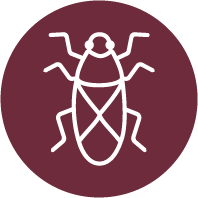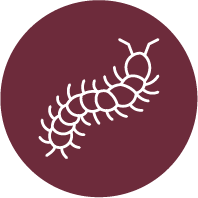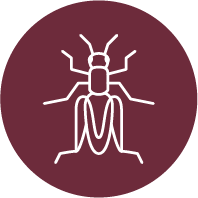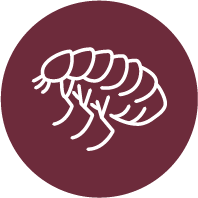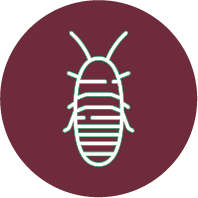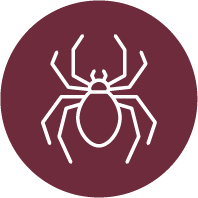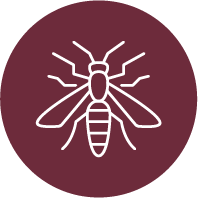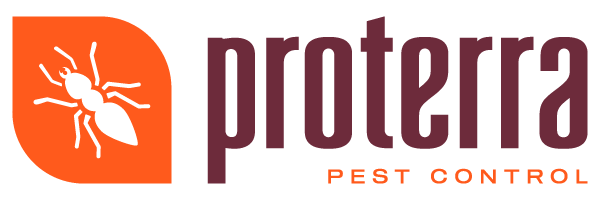Ant Invasion Alert: How to Safeguard Your Home
Summer brings warmth and sunshine, but it also brings unwelcome guests: ants. This resource sheds light on ant behavior and biology, helping homeowners identify vulnerabilities in their homes. It provides practical strategies to prevent and manage ant infestations, ensuring a peaceful and ant-free summer. From natural deterrents to effective control measures, this guide offers solutions for different needs and environments.
Understanding Ant Behavior and Patterns
As the warm embrace of summer returns to the Tri-Cities area, Kennewick, Pasco, and Richland residents often find themselves hosting uninvited guests: ants. While these tiny foragers are an essential part of the ecosystem, in the sanctity of your home, they're nothing short of a nuisance. Recognizing the behavior and patterns of these common invaders is our first line of defense in ensuring our homes remain ant-free throughout the season.
Biology and Lifecycle of Common Household Ants
Ants are not only social but also incredibly persistent in their quest for food and shelter. The common species you might encounter in your home include pavement ants, odorous house ants, and the notorious carpenter ants. Each species carries its unique lifestyle and habits. Understanding these can provide insight into why our abodes are often chosen as their prime real estate.
Factors Contributing to Summer Ant Invasions
Why the uptick in ant activity during summer? It's simple - warmth and moisture create an ideal breeding ground for ant colonies to thrive and multiply. As they forage for sustenance, the bounty within our homes becomes a prime target for these industrious insects. They are particularly attracted to sweet and greasy substances, meaning that the smallest spill or crumb can signal a feast for ant scouts on the prowl.
Signs of an Ant Infestation
Early detection is crucial in preventing a full-scale siege from a band of ants. Telltale signs include observing scouts - solitary ants exploring new terrain for resources. You might also discover their trademark trails, a highway of sorts, towards food sources. Another red flag is spotting small piles of dirt or sawdust, which could indicate nest-building within your home's structure.
Now that we're equipped with an understanding of ant behavior and the telltale signs of their presence, it's essential to move swiftly into action. It's not just about battling an infestation but proactively setting up defenses to maintain a secure, ant-proof residence. Up next, we'll dive into the preventative steps you can take to reinforce your home against these tiny yet mighty invaders.
Preventative Measures for Ant Control
To fortify your home against summer ant invasions, proactive measures are your best allies. Residents in the Tri-Cities region can create a stronghold against ants by starting with the basics: securing the perimeter and maintaining tidiness, inside and out.
Securing The Perimeter of Your Home
The integrity of your home's perimeter directly influences your vulnerability to ant invasions. Begin with a meticulous inspection for cracks, crevices, and any small openings that might serve as gateways for ants. Caulking windows, sealing gaps around utility lines, and repairing weather stripping at doorways are critical tasks. Pay special attention to areas where ants are likely to enter, such as kitchens or bathrooms where moisture is abundant. If you're unsure of all the possible entry points, this resource can provide further enlightenment.
Sanitation and Maintenance Strategies
Cleanliness is non-negotiable when it comes to ant prevention. Wiping down surfaces to prevent sticky residue, promptly addressing spills, and keeping food in sealed containers will diminish the allure of your home to foraging ants. In the yard, regular maintenance such as managing plant debris, trimming back foliage that touches the house, and preventing standing water go a long way in deterring ant colonies from setting up camp close to your living spaces.
Natural Ant Deterrents
Leveraging natural deterrents serves as an eco-conscious way to keep ants at arm's length. Some homeowners swear by concoctions of vinegar or citrus peels infused in water while sprinkling cinnamon, coffee grounds, or peppermint oil in problem areas can also create an unfriendly environment for ants. The strategic planting of ant-repellent flora such as peppermint, lavender, and lemongrass around your property can deliver a one-two punch: refreshing your landscape and fending off the six-legged intruders. Integrating any of these organic pest control methods can support your eco-friendly approach to a pest-free home.
While these measures are the cornerstone of any ant prevention strategy, they're just the beginning. Crafting a secure, comfortable home free of pests requires a blend of inner vigilance and external defenses. Up next, we'll explore the ways to ensure the interiors of your home won't succumb to the quiet yet persistent march of ants.
Safe and Eco-Friendly Ant Control Methods
In a region where the health of our environment is a community pride, Tri-Cities homeowners seek ant control solutions that are as safe for their families and pets as they are for the earth. Sustainable practices in pest control are not only possible; they're a priority.
Interior Treatment Solutions
Within the walls of your home, the aim is to curtail any ant activity without compromising the health of your family or pets. Organic, non-toxic solutions can be remarkably effective here. Using natural ingredients like diatomaceous earth can help eradicate ants while being harmless to humans and animals. Similarly, strategically placing baits formulated with borax can target and eliminate entire colonies over time, without the need for harsh commercial insecticides.
Exterior Defense Strategies
While the right organic methods are your best bet indoors, when it comes to the great outdoors, sometimes a more robust approach is necessary to maintain a buffer between your home and ants. The use of advanced, eco-friendly treatments on the exterior provides a barrier that's tough on ants but gentle on the planet. Such treatments target common entry points and nesting sites, creating a long-lasting defense that's sustainable and effective.
Importance of Regular Professional Services
Even with the best at-home efforts, ant infestations can sometimes gain the upper hand. That's when the expertise of professionals becomes indispensable. Ongoing pest management schedules ensure that no stone is left unturned when it comes to protecting your home. Companies like Proterra Pest Control, which do not engage in harsh chemical use, can offer services that include free-visit guarantees, showing their dedication to keeping your environment ant-free without additional hassle or expense.
Being informed about the invasion patterns of ants and having an arsenal of preventive and treatment options at your disposal are the keys to maintaining a safe haven from these intrusive guests. But, sometimes, ants press forward despite our best defenses. Knowing when to engage with professionals who can preserve the safety and tranquility of your home is the next crucial step in our ant control journey.
Identifying and Responding to an Ant Infestation
When prevention falls short, and you discover unwelcome ant guests, immediate action becomes priority one. First, resist the urge to simply squash the ants and wipe them away; this could signal distress to the colony, prompting a regroup and return. Instead, try to locate the entry point and establish the scope of the infestation. Promptly removing access to food sources by sealing items tight and cleaning up debris will halt their supply line.
Immediate Actions to Take upon Discovery
If you find ants, act quickly by eliminating scent trails with a mix of soap and water, which disorients their navigation. While over-the-counter products might offer a quick fix, they often don't address the root of the problem—namely, the nest. Consider non-toxic options for immediate relief, but remember that these are often short-term solutions.
When to Call Professional Help
When you're facing a relentless ant invasion, it's time to call in the pros. Large or particularly stubborn infestations, evidence of carpenter ant damage, or simply the peace of mind that comes with expert intervention justifies the decision to seek professional help. Pest control specialists are trained to effectively manage the infestation, ensuring both the problem and the solution align with your health-focused, environmentally aware standards.
The Role of Professional Pest Control Experts
Pest control experts bring with them a wealth of experience and a toolbox of effective, family-friendly solutions. Engaging professionals offers a systematic approach—from evaluation to eradication and prevention—to ensure your home becomes and remains ant-free. Trained technicians can also provide guidance on long-term prevention strategies tailored specifically to your home's unique needs.
Armed with the right knowledge and resources, summers in the Tri-Cities area can be spent enjoying the sunshine and natural beauty, rather than battling home-invading ants. Remember, a proactive approach coupled with expert support can make all the difference in preserving the comfort and security of your home.
As we look ahead to the warmer months, let's be mindful of the simple measures we can all take to minimize the risk of an ant invasion. Keep your living space clean, safeguard your home against entry, and stay vigilant for signs of these persistent pests. And, should you ever need assistance, remember that there's a local team ready to lend their expertise.
Proterra Pest Control promises safety, eco-friendliness, and a steadfast commitment to customer satisfaction. Reach out to ensure your home remains a sanctuary this summer and beyond.
